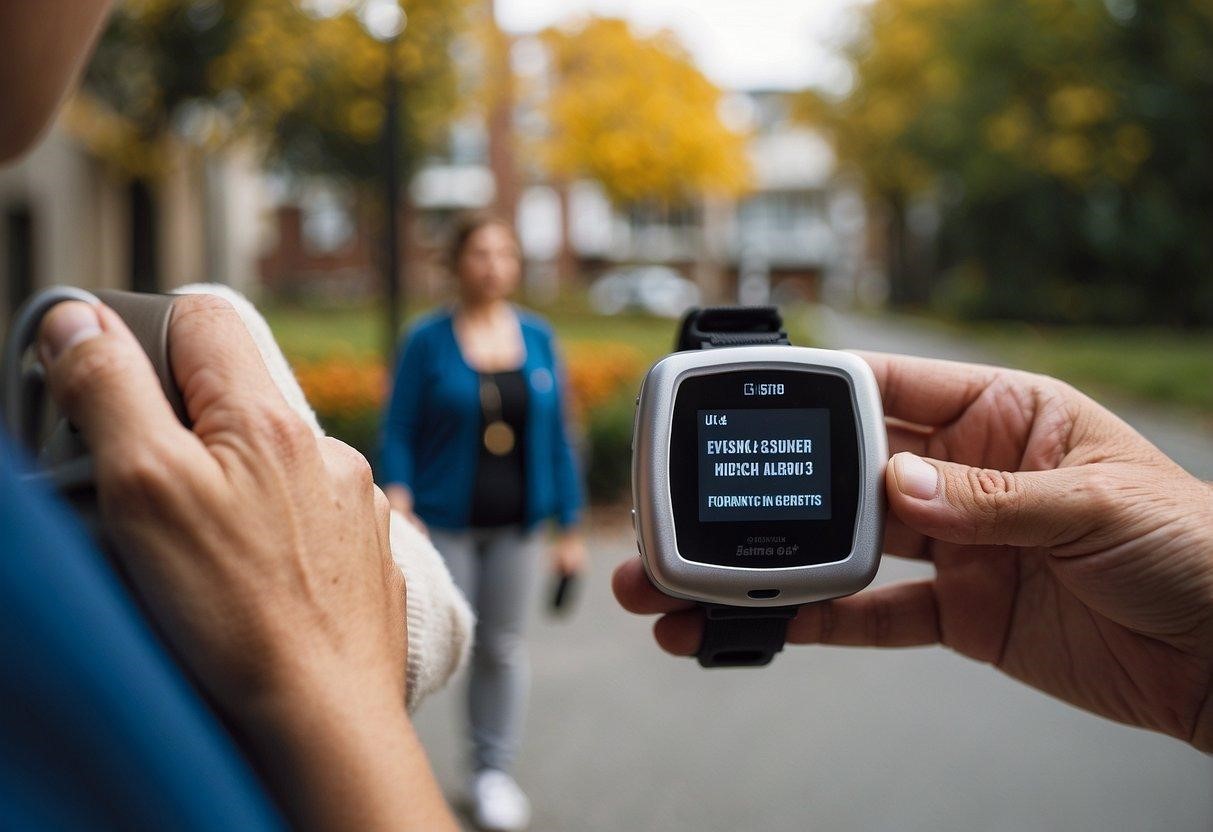
Wearable medical alert devices are gaining popularity among Canadian seniors and their caregivers. These devices offer peace of mind by providing immediate assistance in emergencies. One of the primary advantages is the ability to call for help with a single button press, which can be critical during falls or health issues. Life Assure systems, for example, have been a trusted provider of medical alert systems in Canada for a long period, offering options for use in various environments.
The convenience provided by wearable medical alert devices can significantly enhance the quality of life for seniors. Many products offer automatic fall detection, ensuring that help can be dispatched even if the wearer cannot initiate the call. Moreover, with options like the medical alert system, users can choose devices integrated with everyday accessories like Apple Watches, making them less obtrusive and more comfortable to wear.
Despite their benefits, potential drawbacks include costs and contractual obligations. For instance, some systems may require a one-year contract and involve credit checks, which could be restrictive for some users. It is important to weigh these factors when choosing the ideal medical alert device to suit individual needs and preferences.
Evaluating Wearable Medical Alert Devices
Wearable medical alert devices are essential for senior safety and independence. Factors like technology, design, cost, and system reliability play crucial roles in selecting an appropriate device.
Technology and Features
Modern wearable medical alert devices come equipped with various advanced features. GPS technology allows for precise location tracking during emergencies, enabling quick assistance from emergency responders. Devices often include automatic fall detection, which alerts monitoring centres immediately if a fall is detected, even if the user cannot press the alert button.
Activity tracking and heart rate monitoring are other common features. These functionalities provide additional health data, supporting the overall wellbeing of the user. Some devices also integrate with smartphones, allowing for synced notifications and easier communication with caregivers.
Design and Comfort
Wearable medical alert devices come in various forms, including bracelets, necklaces, and smartwatches. The design should prioritize comfort and ease of use, ensuring the devices are not cumbersome to wear daily. A lightweight and water-resistant construction enhances the user experience, as it allows for continuous wear without discomfort.
Medical alert bracelets and necklaces typically offer simple aesthetics suitable for everyday wear. In contrast, medical alert watches often provide a more technologically advanced appearance. The choice ultimately depends on the user's lifestyle and personal preference, but each design should ensure easy access to emergency help buttons.
Cost Considerations
The cost of wearable medical alert devices can vary widely. Some systems require an upfront equipment fee, while others might involve additional activation fees. Monthly fees are common for ongoing monitoring services, with prices depending on included features like GPS tracking and fall detection.
Affordability is a significant factor, as some users might seek value without compromising safety. Medicare or private insurance may cover part of the expenses, reducing the out-of-pocket cost. Comparing the price and included services of different providers can help in making an informed decision.
System Performance and Reliability
Reliability is critical when selecting a wearable medical alert device. Users depend on prompt emergency response times and consistent system performance. Reputable systems connect directly to professional emergency response centres staffed 24/7, ensuring immediate assistance.
Battery life is another crucial aspect. Devices with extended battery life minimize the need for frequent recharging, making them more dependable, especially during emergencies. Ease of use and intuitive interfaces ensure that users can activate alerts quickly and without complications, enhancing overall reliability.
A well-performing system also includes regular maintenance and updates to ensure that it remains functional under all circumstances. Investing in reliable technology ensures peace of mind for both users and their caregivers.
By focusing on these essential aspects, individuals can find the most suitable wearable medical alert device to meet their needs and provide safety and reassurance.
FAQ
What are wearable medical alert devices?
Wearable medical alert devices are compact, portable gadgets designed to provide immediate assistance in medical emergencies. These devices, often in the form of bracelets, necklaces, or smartwatches, can detect falls, monitor vital signs, and connect users with emergency services.
What are the benefits of using wearable medical alert devices?
Immediate Emergency Response: One of the primary advantages is the quick access to emergency services. In the event of a fall or sudden health issue, the device can automatically alert medical professionals, ensuring timely intervention (source).
Health Monitoring: Many wearable devices come equipped with sensors that monitor vital signs such as heart rate, blood pressure, and oxygen levels. This continuous monitoring can help in early detection of potential health issues (source).
Peace of Mind: For seniors and their families, these devices offer peace of mind knowing that help is just a button press away. This can significantly reduce anxiety and improve the overall quality of life.
Mobility and Independence: Wearable medical alerts allow seniors to maintain their independence while ensuring they are safe. They can continue with their daily activities without the constant fear of being alone in an emergency.
What are the potential drawbacks of wearable medical alert devices?
Cost: The initial purchase price and ongoing subscription fees for monitoring services can be a financial burden for some users. Prices can vary significantly depending on the features and services offered (source).
False Alarms: Wearable devices can sometimes trigger false alarms, which can be inconvenient and stressful. This might lead to unnecessary emergency responses and potential additional costs.
Battery Life and Maintenance: Regular charging and maintenance are required to ensure the device functions correctly. Forgetting to charge the device or perform necessary updates can render it ineffective during an emergency.
Privacy Concerns: As these devices collect and transmit data, there are valid concerns regarding privacy and data security. Users need to be aware of how their personal health information is being used and stored by the service providers (source).
Are wearable medical alert devices suitable for everyone?
While these devices are particularly beneficial for seniors and individuals with chronic health conditions, they can be useful for anyone who wants an added layer of safety. However, it's essential to consider the specific needs and lifestyle of the user before making a purchase.
Implications for Users and Caregivers

Wearable medical alert devices offer significant advantages. These include enhanced safety, increased independence, efficient support and response, and positive impacts on health and lifestyle, especially for older adults.
Safety and Independence
Wearable medical alert devices greatly enhance safety and independence for older adults. Devices such as these provide immediate access to emergency services, reducing the risk of severe injury from falls. This technology allows seniors to live independently while still having the reassurance of help if needed. The discreet design ensures ease of use, bolstering the confidence of users to maintain their daily routines without fear. These devices promote a safer living environment and foster a greater sense of autonomy and dignity.
Support and Response
The support and response features of these devices are crucial for both users and caregivers. Many for instance, come with a connected App, allowing caregivers to receive alerts and updates about the wearer's status. This connectivity ensures that help can be dispatched immediately in case of emergencies. Caregivers can monitor real-time health data, providing peace of mind and enabling prompt intervention when necessary. This efficient communication between the device and caregivers helps in mitigating potential health risks and ensures quick emergency response where required.
Health and Lifestyle Impact
Wearable medical alert devices positively impact health and lifestyle by integrating features like health monitoring and medication reminders. These devices track physical activity, monitor vitals, and can alert users to take their medication on time, supporting a healthier lifestyle. For older adults, this continuous monitoring helps in identifying potential health issues early, thus preventing complications. Furthermore, the ease of use and portability of these devices ensure that they can be seamlessly incorporated into daily routines, enhancing the overall quality of life without being intrusive. Providing constant health tracking and alerts, these devices contribute significantly to managing and improving the users' health and well-being.
Disclaimer: This post was provided by a guest contributor. Coherent Market Insights does not endorse any products or services mentioned unless explicitly stated.





